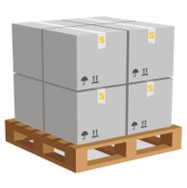
Understanding attire metrics occasionally presents itself as a cryptic conundrum
- Registering your form dimensions starts smart shopping
- Collect correct chest, waist and hip data to confirm fit
- Study the supplier's measurement guide for precision
Do not lean exclusively on size tags that may mislead you Instead, align your body stats with the brand's table. Discovering wardrobe identity is an individual experiment.
Demystifying the art of size references
Size irregularities in apparel often puzzle consumers globally. Understanding fit scales may take detective-like effort, given brands apply unique numerical systems. Still, simple knowledge and tools let you overcome sizing puzzles.
- Initially, note the measurement conventions used by makers. Usually size guides use US, UK, EU and various Asian designations.
- Continue by verifying chest, waist, hips and length against your stats. Align these dimensions with your own measurements.
- Ultimately, read the merchant's sizing advice before choosing. You will usually find advice, alteration suggestions and guidance.
Locating the best fit during clothing selection
The territory of clothes measurements often confuses shoppers. Because of varied charts, medium can equal small at other stores. Inconsistency comes from diverse sizing templates companies apply. As a first step, obtain precise self measurements. Take a flexible tape and note bust, waistline and hip stats. Avoid assuming your regular size always guarantees fit. Garment type within a brand may result in differing fit. Determining the best fit is a process of trial and adjustment.

Choosing between ready sizes and made-to-order fit
With items beyond clothing, you decide between common or tailored sizes. Pros and cons exist for both standard and custom paths. Regular sizes deliver convenience and frequently lower cost. If you have an unusual space or special requirement custom may suit better
- Evaluate your needs and financial plan prior to selection
- Collect precise size data whether for room or clothing
- Research makers and options thoroughly before purchase
Ultimately the suitable measurement varies with your circumstances.
Conquering the art of converting sizes worldwide
Converting across international and brand scales may be challenging. Fortunately, accessible tools help bridge sizing differences. Begin the process by understanding common apparel and shoe metrics. Leverage reference tables to convert international sizes. Realise that personal shape plays a role in choosing size. Check reviews and fit reports to confirm expected sizing.
How to decode sizes and pick the right fit
Tackling clothing charts often feels baffling. Companies tend to use their own sizing frameworks, however a few pointers here will make the charts approachable.
- Start out by taking precise body readings with a tape
- Thereafter, confirm your dimensions with the provided size map
- Consider your silhouette because form affects fit perception
Conclusively, trying on remains the surest path to the right fit.
The ultimate chart for both men's and women's dimensions
Online buying amplifies sizing uncertainty for many customers. Accordingly, use this guide to understand men's and women's sizing norms. In buying pants, shirts or dresses these tips clarify the right size.
- First, remember that sizing varies by brand and country
- Second, pay attention to waist, hips, bust and shoulder measurements
- Finally don't be afraid to size up when between measurements
Applying these steps equips you to handle sizing charts confidently. Enjoy selecting the perfect fit!

Essential tips for choosing children's clothing sizes
Identifying the right fit for children may feel tough. Kids' rapid growth means sizes alter in short order. Look to the brand's chart rather than age as the sole guide. Get the child's chest, waist and height figures for accuracyTaking bust, waist and hip measurements correctly
Finding garments that suit you needs precise body figures. Use a soft measuring tape and a helper for best accuracy. Position yourself upright, shoulders at ease and feet apart
A guide to interpreting XS, S, M, L, XL and XXL
Today’s sizing landscape has grown complex and varied. Variation between makers reduces the chance of consistent fits. Analyzing the spectrum of sizes helps resolve confusion. Let's break down what each size label signifies in reality!
Encouraging celebration of body diversity

Supporting size inclusion combats restrictive ideals. It promotes rejecting constraints that label only one size desirable. Let us build a culture that uplifts all bodies and promotes confidence.
- Commit daily to encouraging body acceptance and love Decide each day to celebrate body kindness and positive views Adopt routines that strengthen body confidence and care Standard Size Select habits that promote acceptance and healthy self-view
- Remember that beauty exists across many shapes and sizes
- Refuse to accept narratives that limit what bodies should look like
- Select habits that promote acceptance and healthy self-view
